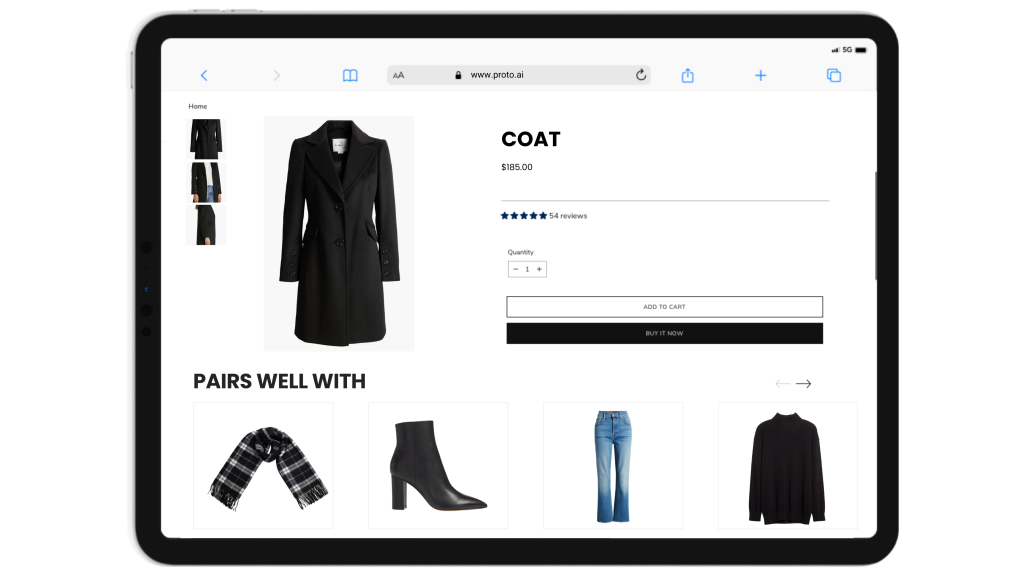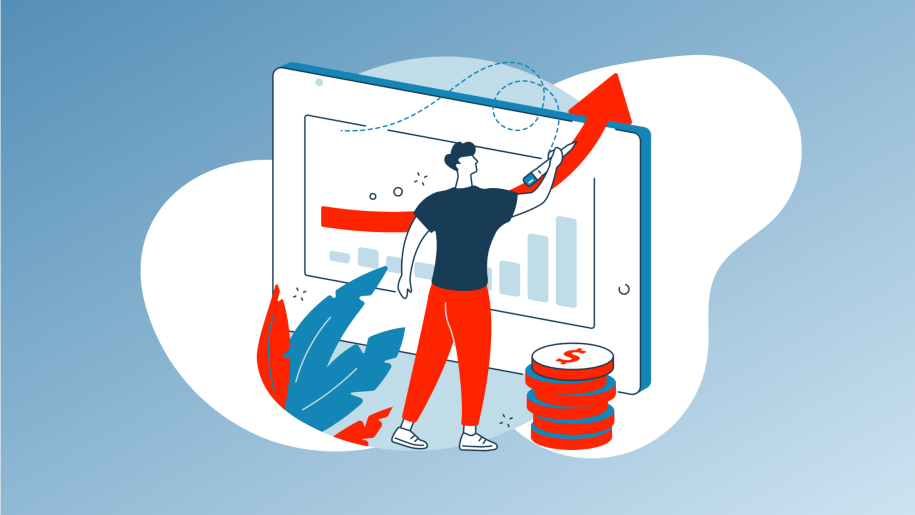The power of ecommerce personalization is all about transforming an impersonal online shopping trip into an intimate real-life experience.
Sure, it sounds easy. But how can businesses make that happen on their website?
We’ll explore the simple yet effective strategies any business owner could apply today. You’ll learn how personalization improves customer satisfaction, drives sales up, enhances email marketing impact and why personalized product recommendations are the ‘secret sauce’ for ecommerce success.
The importance of personalization
Online shopping has become a mainstay in our daily lives. Though widespread, not all web-based stores are the same. Enter personalization – the game changer for any online store aiming to provide an improved customer experience.
A recent study showed that 71% of consumers expect personalized interactions from businesses. If you’re not customizing your customers’ experiences, you may be missing the mark with their expectations.
Poor or nonexistent personalization can lead to frustration and even lost sales. Customers tend to give up on a purchase because the content they encounter is poorly curated and irrelevant to them personally. Every visitor matters, and we can’t afford such losses.
This shows us two things: Customers value being seen as individuals with unique tastes and preferences. Secondly, there is indeed quite some room for improvement here.
Catering to customer expectations with ecommerce personalization
To meet these high consumer expectations for customized interactions, brands need smart ecommerce personalization strategies in place.
- E-commerce personalization: This isn’t just about recommending products based on browsing history or previous purchases. It’s about creating a comprehensive, personalized shopping experience that makes each visitor feel seen and valued.
- Customer loyalty: The more tailored the customer experience is, the higher their satisfaction will be. This leads to repeat visits and increased brand loyalty.
Personalization isn’t just a nice-to-have; it’s an essential strategy for any online store wanting to keep up with customer expectations in this fast-paced digital age.
It’s all about understanding how visitors interact with your website. What pages do they visit?
How much time do they spend on each page? This data gives valuable insights to improve user experience and boost conversion rates.
The revenue potential of personalized interactions
Effective ecommerce personalization strategies can have a dramatic impact on your bottom line. How? Well, it’s simple math. When customers feel understood and valued through personalized interactions, they’re more likely to convert and increase their average order value. Companies that excel in personalization generate more revenue than their less personalized competitors.
If you start offering products based on the browsing behavior of website visitors or offer first-time visitors tailored offers; chances are high they will click ‘Buy’ faster than ever before.
- Create seamless checkout processes to make sure customers continue shopping without hiccups.
- Use real-life customer data to show relevant products and complementary items, enhancing the shopping experience.
- Retargeting to reach customers who have abandoned their cart but are still potential buyers.
The power of loyalty programs in customer retention
Loyalty programs keep customers coming back for more. They’re designed to enhance customer experience by rewarding returning visitors who continue shopping at your online store.
As an example, Square has a loyalty program that helps increase return visit frequency up to 40%. Not only do they make customers feel valued but also help businesses get invaluable insights into their shopping habits which helps offer first-time visitors similar benefits leading to higher engagement rates.
Acing email personalization tactics
Email marketing might be old school compared to other tactics here but don’t underestimate its power. But how does one start implementing these tactics? The first step is collecting email addresses during different stages of the customer journey; whether it’s during checkout or via a promotion.
For instance, if a customer adds an item to their shopping cart but abandons it before completing the purchase, you can send a personalized reminder email nudging them to continue shopping.
The role of personalized product recommendations
We’ve all been there – scrolling through endless options feeling overwhelmed rather than excited about our next purchase; paralyzed by choice, if you will.
A well-implemented recommendation engine changes all that – acting like a knowledgeable shop assistant who knows exactly what you need before even asking. From complementary items such as shoes that pair perfectly with a dress, to personalized bestseller lists based on browsing behavior; these recommendations help customers navigate through the clutter and make decisions quickly.
You’re online shopping for a new coat. Suddenly, the site suggests a matching scarf, and shoes. That’s personalized product recommendations in action, and it’s no surprise that consumers are more likely to buy from brands that remember their preferences and provide relevant offers and recommendations.
Personalized product recommendations also allow online retailers to enhance customer satisfaction by creating an experience based on real-life shopping habits. The result? A happy customer is more likely to return for their next shopping spree.

Using user-generated content for personalization
User-generated content (UGC) is another fantastic tool in the personalization toolbox. Think customer reviews or photos shared by shoppers themselves – it doesn’t get much more real than that.
This strategy adds an extra layer of authenticity to your ecommerce platform while also giving you insight into what customers truly want. Imagine being able to use this feedback loop not only to enhance user experience but also to guide inventory decisions. Now we’re talking efficiency.
UGC takes ‘word-of-mouth’ marketing onto the digital stage where it shines even brighter with its reach potential. The beauty here is UGC helps foster trust among online shoppers as they can see genuine experiences other people have had with products.
Social retargeting for increased engagement
Social retargeting involves showing ads on social media platforms based on previous interactions users had with your website – another powerful tool.
If someone leaves your site without making a purchase but is interested enough to check out some products, why not remind them via targeted social media ads? It’s like giving them a gentle nudge towards completing their purchase.
Leveraging customer data through AI-driven personalization platforms
A comprehensive ecommerce personalization platform uses AI to analyze browsing behavior. This technology allows businesses to craft individualized experiences tailored to customers’ preferences.
It might be suggesting products based on previous purchases or offering first-time visitors a special discount. These platforms are built to help you deliver relevant content and increase average order value.
Know your customers, and offer them what they need when they need it. Customers crave personalization — don’t disappoint them with generic content, instead use their browsing behavior to make relevant suggestions.

